Rhinophyma treatment – Friday Pop Quiz 02/26
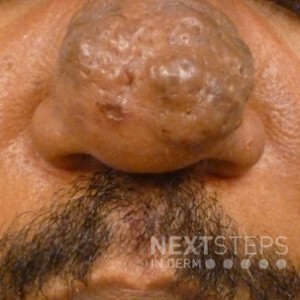 What is the best choice of a wavelength of a laser to treat the changes you see here?
A. 595 nm
B. 1,064 nm
C. 810 nm
D. 755 nm
E. 10,600 nm
To find out the correct answer and read the explanation, click here.
Brought to you by our brand partner Derm In-Review. A product of SanovaWorks.
…
What is the best choice of a wavelength of a laser to treat the changes you see here?
A. 595 nm
B. 1,064 nm
C. 810 nm
D. 755 nm
E. 10,600 nm
To find out the correct answer and read the explanation, click here.
Brought to you by our brand partner Derm In-Review. A product of SanovaWorks.
…
 What is the best choice of a wavelength of a laser to treat the changes you see here?
A. 595 nm
B. 1,064 nm
C. 810 nm
D. 755 nm
E. 10,600 nm
To find out the correct answer and read the explanation, click here.
Brought to you by our brand partner Derm In-Review. A product of SanovaWorks.
…
What is the best choice of a wavelength of a laser to treat the changes you see here?
A. 595 nm
B. 1,064 nm
C. 810 nm
D. 755 nm
E. 10,600 nm
To find out the correct answer and read the explanation, click here.
Brought to you by our brand partner Derm In-Review. A product of SanovaWorks.
… Continue reading "Rhinophyma treatment – Friday Pop Quiz 02/26"


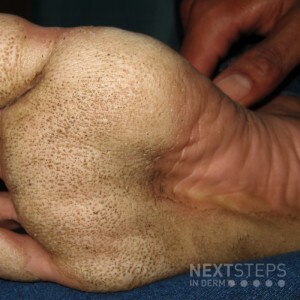 What organism caused this disease?
A. Kytococcus sedentarius
B. Candida albicans
C. Staphylococcus aureus
D. Corynebacterium tenuis
E. Corynebacterium diphtheriae
To find out the correct answer and read the explanation, click here.
Brought to you by our brand partner Derm In-Review. A product of SanovaWorks.
…
What organism caused this disease?
A. Kytococcus sedentarius
B. Candida albicans
C. Staphylococcus aureus
D. Corynebacterium tenuis
E. Corynebacterium diphtheriae
To find out the correct answer and read the explanation, click here.
Brought to you by our brand partner Derm In-Review. A product of SanovaWorks.
… 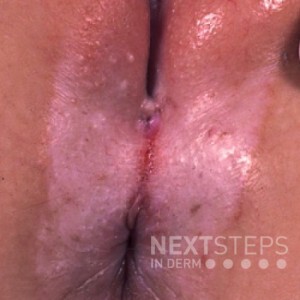 What complication can occur if this disease is left untreated?
A. Development of a squamous cell carcinoma
B. Testicular torsion
C. Erectile dysfunction
D. Impotence
E. Pseudo-ainhum
To find out the correct answer and read the explanation, click here.
Brought to you by our brand partner Derm In-Review. A product of SanovaWorks.
…
What complication can occur if this disease is left untreated?
A. Development of a squamous cell carcinoma
B. Testicular torsion
C. Erectile dysfunction
D. Impotence
E. Pseudo-ainhum
To find out the correct answer and read the explanation, click here.
Brought to you by our brand partner Derm In-Review. A product of SanovaWorks.
… 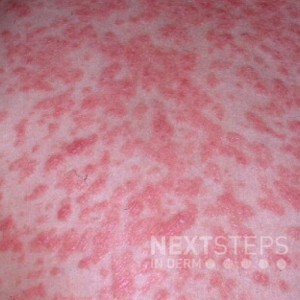 What is the most likely diagnosis in this 16-year-old patient who developed this generalized eruption two weeks after onset of a sore throat due to strep infection?
A. Psoriasis
B. Pityriasis rosea
C. Cutaneous T-cell lymphoma
D. Contact dermatitis
E. Lichen planus
To find out the correct answer and read the explanation, click here.
Brought to you by our brand partner D …
What is the most likely diagnosis in this 16-year-old patient who developed this generalized eruption two weeks after onset of a sore throat due to strep infection?
A. Psoriasis
B. Pityriasis rosea
C. Cutaneous T-cell lymphoma
D. Contact dermatitis
E. Lichen planus
To find out the correct answer and read the explanation, click here.
Brought to you by our brand partner D … 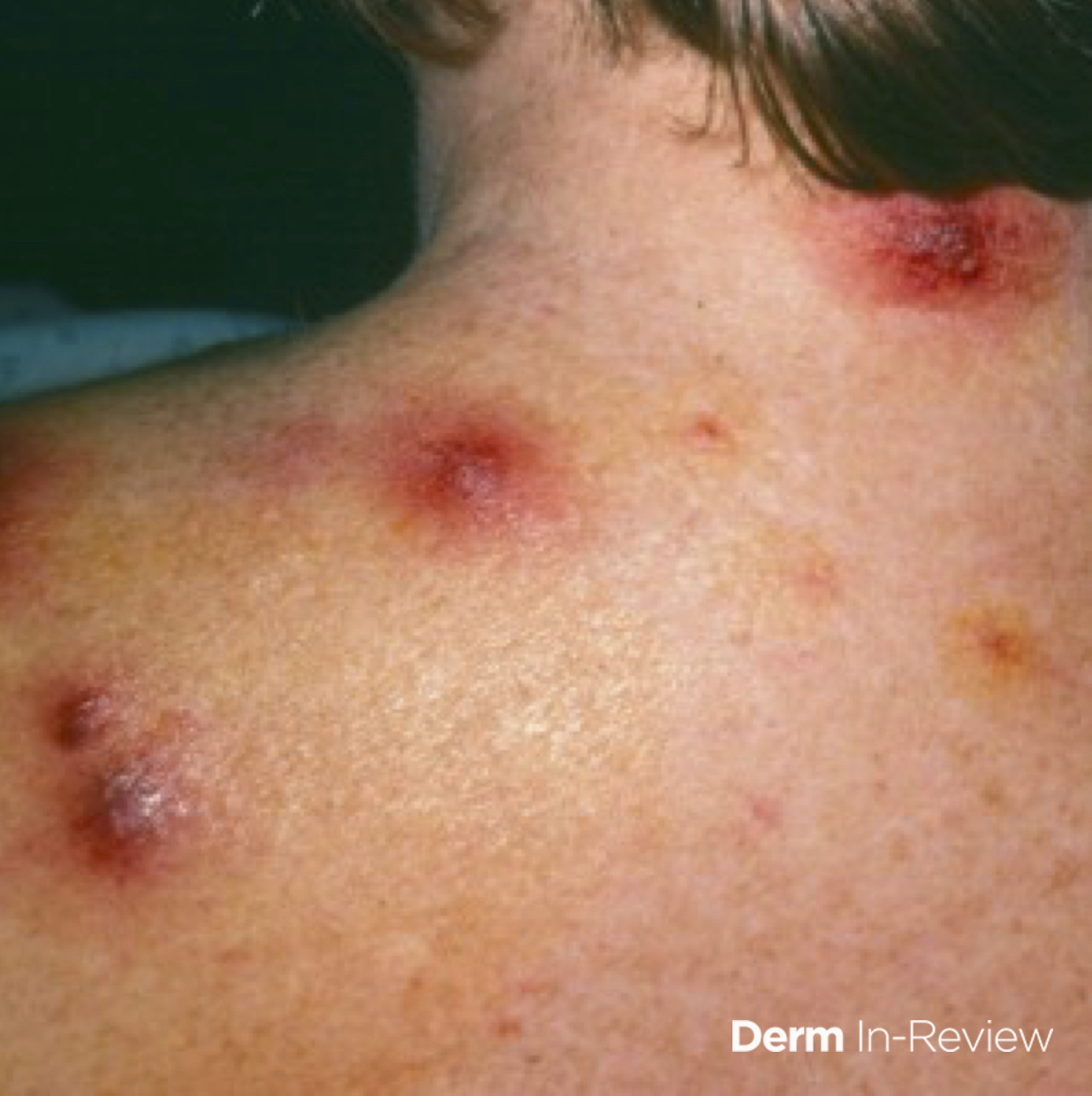 A pregnant 33-year-old female presents with the shown painful lesions that appeared abruptly one week ago. She additionally has been febrile to 38.3C with malaise and headaches. What do you expect to find on biopsy of a representative lesion?
A. Perivascular neutrophils with fibrinoid necrosis and RBC extravasation
B. Apoptotic individual keratinocytes with intracellular spongiosis
…
A pregnant 33-year-old female presents with the shown painful lesions that appeared abruptly one week ago. She additionally has been febrile to 38.3C with malaise and headaches. What do you expect to find on biopsy of a representative lesion?
A. Perivascular neutrophils with fibrinoid necrosis and RBC extravasation
B. Apoptotic individual keratinocytes with intracellular spongiosis
…